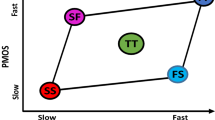Abstract
One of the persistently used primitives is C-element, which is used in asynchronous control circuits. This work introduces a new low power, high speed, robust design for the implementation of the C-element. It also presents an analysis and estimation of various design metrics. The proposed C-element design has an additional NMOS transistor placed appropriately at one critical node so that the leakage current and noise at that particular node are greatly reduced. The beauty of the proposed design is that it does not require any additional control circuitry to operate the additional transistor, and also the increase in area is negligible. The two most popular designs of the C-element are analyzed and compared with the proposed implementation in terms of power, propagation delay, PDP, EDP, and robustness in terms of variability analysis. More emphasis is given to energy and Delay. A rigorous analysis of the proposed design and previously reported designs is done to make sure the proper functioning of the circuit and the several advantages that are achieved with the proposed design. The analysis is done through simulation using 90 nm technology in Cadence Virtuoso. The response is also observed and estimated for temperature variations (−55 °C to 125 °C), variation in load capacitance (1fF to 30fF), and supply voltage (735 mV to 1050 mV). PDP and delay variability analysis with voltage is performed using Monte Carlo simulations for 2800 samples. The proposed design is providing reduced power consumption (62.4x), less propagation delay (41.05x), smaller PDP (78.15x) and EDP (87.12x). Also, the design is robust against various parameters variations and shows smaller variation in variability analysis against applied supply voltage.











Similar content being viewed by others
References
S.C. Smith and J. Di, Future of asynchronous logic. Circuits for emerging application. CRC Press, VLSI (2014), pp. 311–324.
S. Hauck, Asynchronous design methodologies: an overview. Proceed. IEEE, 83 (1995) 69–93.
C.H. van Berkel, M.B. Josephs, S.M. Nowick, Applications of asynchronous circuits, Proceedings of the IEEE, 87 (1999).
Spars and S. Furber, Principles of asynchronous circuit design: a systems perspective, 1st ed. Springer Publishing Company, Incorporated, (2010).
C. Mead, L. Conway, Introduction to VLSI systems. Addison-Wesley, (1979).
J. Sparso, S. Furber, Principles of asynchronous circuit design - a systems perspective. Kluwer Academic Publishers (2001).
I.E. Sutherland, Micropipelines. Commun. ACM, 32 (1989) 720–738.
D.E Muller, W.S. Bartky, A theory of asynchronous circuits, Int. Symposium on the switching theory in Harvard University, (1959), pp. 204–243.
W.J. Poppelbaum, Introduction to the theory of digital machines. Math., E.E. 294 Lecture Notes, University of Illinois at Urbana-Champaign.
J. Gunawardena, A generalized event structure for the Muller unfolding of a safe net, Int. Conference on Concurrency Theory (CONCUR) (1993), pp. 278–292.
M.R. Greenstreet, Real-time merging, International Symposium on advanced research in asynchronous circuits and systems, (1989), pp. 186–198.
D.G. Toro, M. Arzel, F. Seguin and M. Jzquel, Soft error detection and correction technique for radiation hardening based on C-element and BICS. IEEE Trans. Circuits and Syst. II: Exp. Briefs, 61 (2014) 952–956.
B. Vaidyanathan, Y. Xie, N. Vijaykrishnan, H. Zheng, Soft error analysis and optimizations of C-elements in asynchronous circuits, proceedings of the second workshop on system effects of logic soft errors (SELSE), (2006), pp 1–4.
L. Zhou, S.C. Smith and J. Di, Radiation hardened NULL convention logic asynchronous circuit design. J. Low Power Electron. Appl., 5 (2015) 216–221.
A.J. Martin, S.M. Burns, T.K. Lee, D. Borkovic, P.J. Hazewindus, The design of an asynchronous microprocessor, Advanced Research in VLSI: Proceedings of the decennial caltech conference on VLSI (C. L. Seitz, ed.), (1989), pp. 351–373.
S. Furber, Computing without clocks: Micropipelin ing the ARM processor, Proceedings ban vIII workshop: Asynchronous digital circuit design (G. Birtwistle and A. Davis, eds.), Workshops in Computing, Springer-Verlag, (1995).
K. van Berkel, R. Burgess, J. Kessels, A. Peeters, M. Roncken, F. Schalij, A fully-asynchronous low- power error corrector for the DCC player, International Solid-State Circuits Conference, (1994), pp. 87–89.
M. Shams, Jo.C. Ebergen and M.I. Elmasry, A comparison of CMOS implementations of an asynchronous circuits primitive: the C-element, Proceedings of international symposium on low power electronics and design, 1996 (1996) 93–96.
K. Sharma, K. Sunil, A robust c-element design with enhanced metastability performance, Proceedings of the on great lakes symposium on VLSI, (2017), pp. 95–100.
C. Winstead and M. El Hamoui, Reducing clock jitter by using muller-c elements. Electron. Lett., 45 (2009) 150–151.
K. Agrawal, S. Chowdhury, S. Kumar Dubey and A. Islam, Robustness study of muller c-element annual convention of the computer society of India. Springer, Singapore (2018), pp. 131–139.
I.A. Danilov, S.G.Maxim, I.S. Alexandra, O.B. Anton, B.R. Yuri and G.B. Sergey, DICE-based muller C-elements for soft error tolerant asynchronous ICs, 16th European Conference on Radiation and Its Effects on Components and Systems (RADECS), (2016), pp. 1–4.
T. Calin, M. Nicolaidis and R. Velazco, Upset hardened memory design for submicron CMOS technology. IEEE Trans. Nuclear Sci., 43 (1996) 2874–2878.
P. Verma, V.S. Pandey, A.K. Sharma and A. Noor, Estimation and analysis of novel dynamic body biased tspc design technique. MAPAN, 33 (2018) 405–416.
M. Alioto, G. Palumbo and M. Pennisi, Understanding the effect of process variations on the delay of static and domino logic. IEEE Trans. Very Large Scale Integrat. VLSI Syst., 18 (2010) 697–710.
Author information
Authors and Affiliations
Corresponding author
Additional information
Publisher's Note
Springer Nature remains neutral with regard to jurisdictional claims in published maps and institutional affiliations.
Rights and permissions
About this article
Cite this article
Verma, P., Pandey, V.S. & Sharma, A.K. Implementation and Variability Analysis of Low-Power Robust Muller C-Element: LPRCE. MAPAN 38, 63–70 (2023). https://doi.org/10.1007/s12647-022-00565-2
Received:
Accepted:
Published:
Issue Date:
DOI: https://doi.org/10.1007/s12647-022-00565-2




